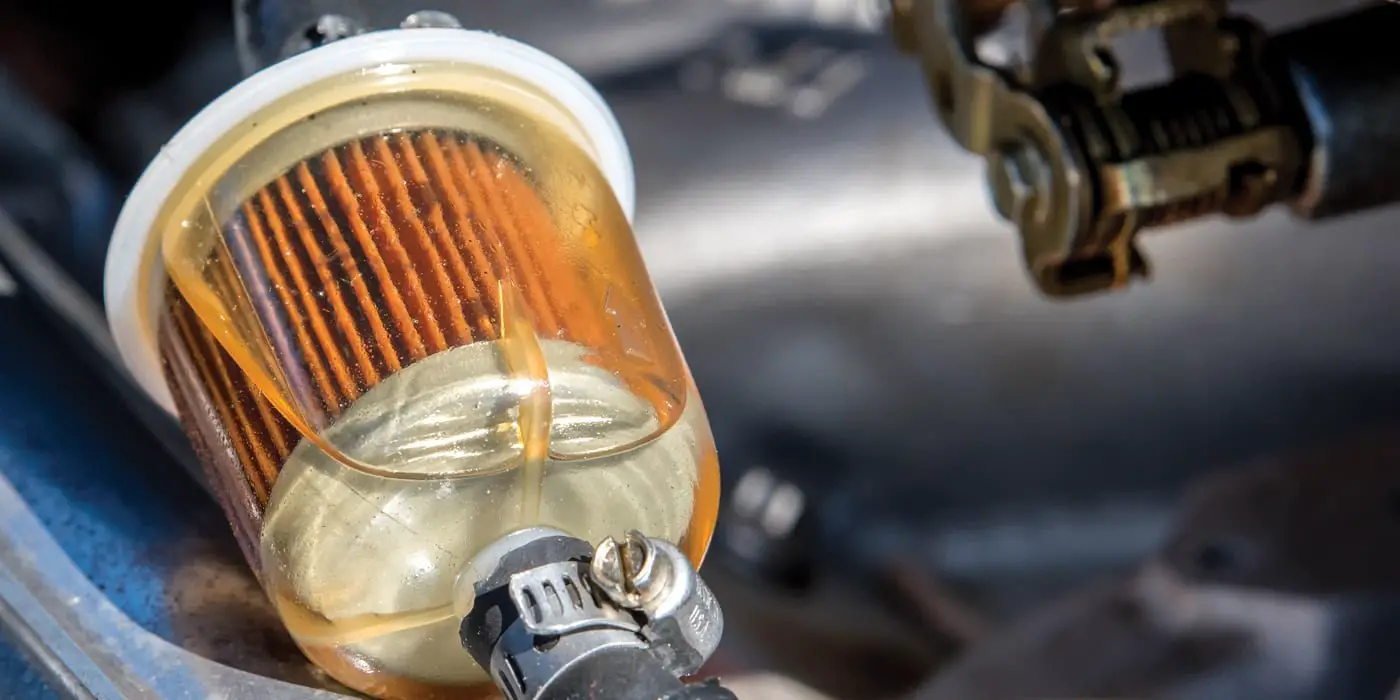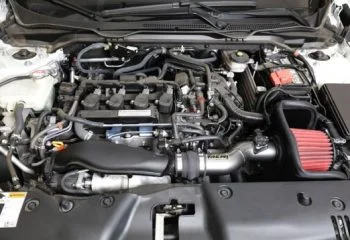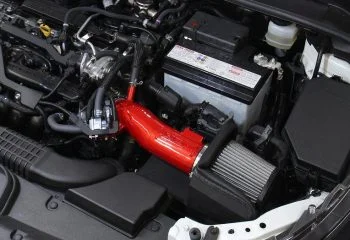If you’re like most people, you may not know the difference between oil filter vs fuel filter. In fact, you may not even know what either of them does. While both filters do important jobs in your car, they have different functions.
An oil filter traps contaminants in the engine oil, while a fuel filter traps contaminants in the fuel system.
It’s important to know the differences between them and to keep each one clean and functioning properly. Here’s a look at the differences between oil filter vs fuel filter, what each one does for your vehicle and explain why it’s important to keep them both in good condition. We’ll also provide tips on how to care for each type of filter.
What's in this post?
What is an oil filter and what does it do?
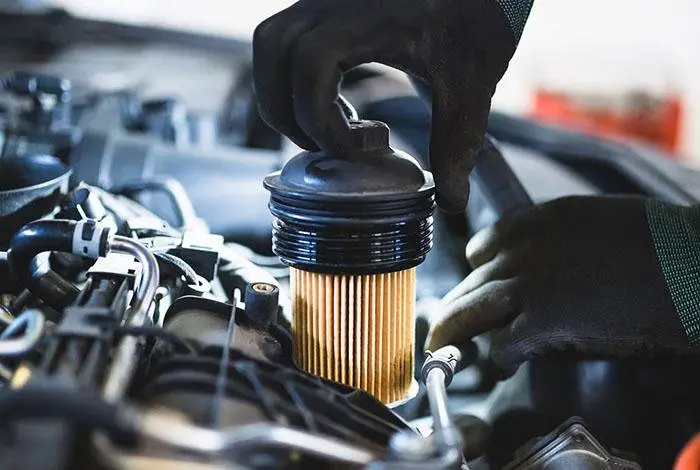
As anyone who has ever changed their own oil knows, an oil filter is a vital component of any vehicle. Its purpose is to remove contaminants from the engine oil before it circulates back through the engine.
These contaminants can come in the form of dust, metal particles, and even water. If left unchecked, they can cause serious damage to engine components.
The oil filter is typically located near the oil pan, and it consists of a paper or cloth element that is encased in a metal canister. When changing your oil, it is important to always replace the filter as well; otherwise, you run the risk of damaging your engine.
Type of oil filters
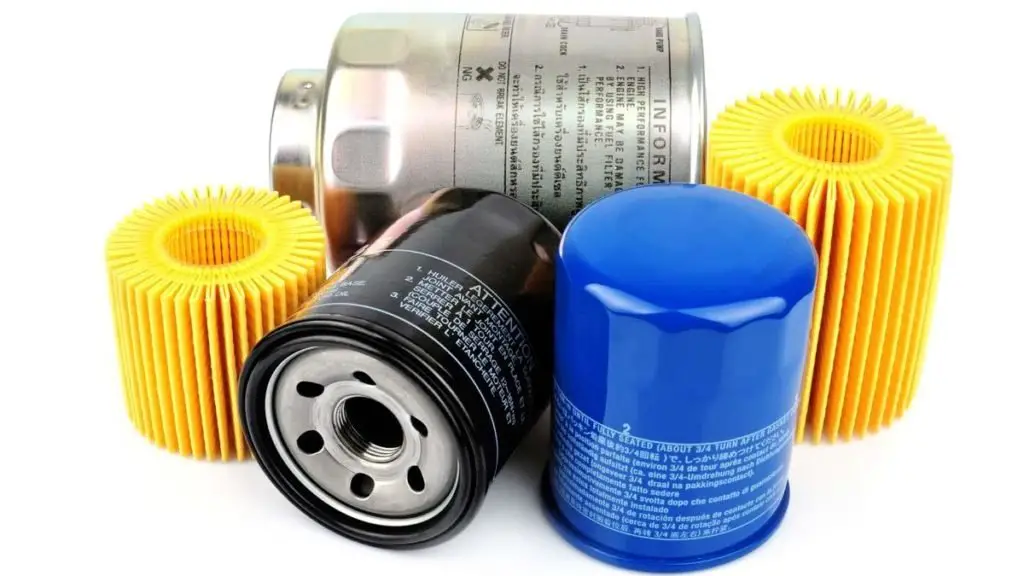
There are 5 types of oil filters:
Full flow filter
The full flow oil filter has a bypass valve that allows oil to bypass the filter if it becomes clogged. The full flow oil filter also has an anti-drain back valve that prevents oil from draining back into the crankcase when the engine is not running.
The full flow oil filter is constructed of a paper or cloth element that is surrounded by a metal canister. The canister has an inlet and outlet port that are connected to the engine.
The paper or cloth element is responsible for filtering out the contaminants from the oil. The metal canister ensures that the paper or cloth element does not collapse under pressure.
Secondary oil filter
A secondary oil filter is a type of oil filter that is typically used in addition to the primary oil filter. The primary oil filter removes the large particles from the oil, while the secondary oil filter removes the smaller particles.
Secondary oil filters are often made of pleated paper or synthetic media, and they are usually located after the primary oil filter in the engine lubrication system.
The main advantage of using a secondary oil filter is that it can help to extend the life of the engine by keeping the oil clean for longer periods of time.
In addition, secondary oil filters can also help to improve fuel economy by reducing friction between the moving parts of the engine.
However, one downside of using a secondary oil filter is that it can add to the cost of maintaining the engine. Overall, however, the benefits of using a secondary oil filter typically outweigh the disadvantages.
Spinner filter
Spinner oil filter composed of a cylindrical housing, a spinner disk with vanes, and a filter element. The housing contains an inlet port and an outlet port. The spinner disk is mounted inside the housing so that it can rotate. T
he vanes on the spinner disk help to draw oil into the center of the disk. The filter element is located in the center of the spinner disk. It is made of a porous material that traps contaminants as the oil passes through it.
The Spinner oil filter is very effective at removing contaminants from oil, and it is often used in high-performance engines.
Spin-on filter
A spin-on oil filter is a type of oil filter that uses centrifugal force to separate contaminants from oil. It typically consists of a cylindrical canister with a perforated metal bottom, a filtering element, and a threaded endcap.
As oil passes through the filter, the spinning action of the filter element throws the contaminants to the outer wall of the canister where they are trapped by the perforations.
The filtered oil then flows through the center of the element and out the endcap.
Cartridge filter
A cartridge oil filter is a type of engine oil filter that uses a pleated paper filter element. This paper element is usually encapsulated in a metal canister, and the canister has an inlet and an outlet hose connected to it.
As dirty oil enters the cartridge oil filter, it is forced through the paper element, which catches contaminants before they can enter the engine. The clean oil then flows out of the cartridge oil filter and back into the engine.
Cartridge oil filters are more efficient than spin-on oil filters because they have a larger surface area for catching contaminants.
They are also less likely to leak because the seal between the canister and the engine is better than the seal on a spin-on filter. However, cartridge oil filters are more expensive than spin-on filters and can be more difficult to replace.
Magnetic filter
Magnetic oil filters are secondary filter, designed to remove ferrous metal particles from engine oil. These particles can come from a variety of sources, including wear on engine components and the breakdown of additives in the oil.
Magnetic filters typically consist of a housing that contains a magnet or magnets. The oil is passed through this housing, and the magnets attract and capture the metal particles.
The filtered oil is then returned to the engine. Magnetic filters can be used in conjunction with other types of filters, such as full-flow filter, to provide an extra level of protection for your engine.
Magnetic oil filters need to be cleaned periodically, but they do not need to be changed as often as traditional oil filters. This makes them a cost-effective and convenient option for many vehicle owners.
What is a fuel filter and what does it do?
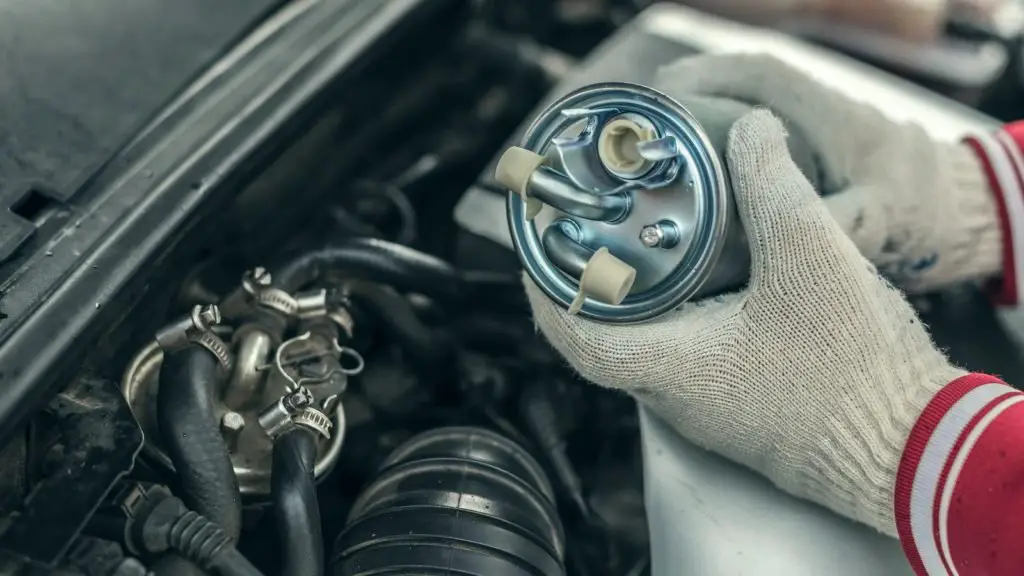
A fuel filter is a critical component of any internal combustion engine. Its purpose is to remove contaminants from the fuel before it enters the engine, where they could cause damage.
Fuel filters come in a variety of shapes and sizes, but most contain a pleated paper element that captures impurities as the fuel passes through it.
The paper element is usually surrounded by a metal housing that contains holes or slots that allow fuel to flow through while trapping larger particles.
Some fuel filters also contain an activated carbon element that helps to absorb small impurities. Fuel filters need to be regularly replaced to ensure that they continue to function properly.
Over time, the paper element can become clogged with debris, and the activated carbon can become saturated. If a fuel filter is not replaced when needed, it can cause engine damage or even failure.
Type of fuel filters
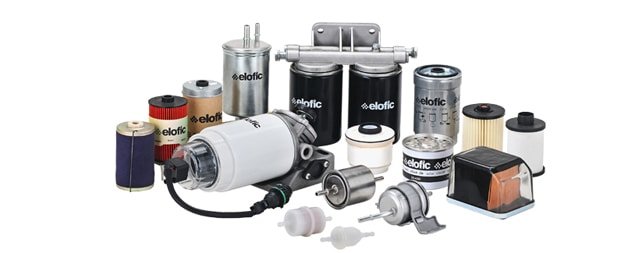
There are 5 main types of fuel filters:
Primary Filter
The primary fuel filter is located between the fuel tank and the fuel pump. Its purpose is to remove any debris or contaminants from the fuel before it enters the pump.
The most common type of primary fuel filter is a mesh screen that catches large particles of dirt and rust. Some fuel filters also have a second stage, which consists of a pleated paper element that traps smaller particles.
The pleats in the paper allow for a much larger surface area, which increases the filtering efficiency. The primary fuel filter should be checked regularly and replaced as needed to ensure that the fuel system is not being clogged by dirt and debris.
Secondary fuel filter
A secondary fuel filter is a type of filter that is typically used in conjunction with a primary fuel filter. As its name implies, a secondary fuel filter is designed to capture any remaining contaminants that may have passed through the primary filter.
Secondary fuel filters are often made of more durable materials than primary filters, as they need to be able to withstand higher levels of wear and tear.
In terms of construction, secondary fuel filters typically feature a multi-stage design that includes a pre-filter, an activated carbon filter, and a final porous membrane.
This type of construction is designed to provide maximum efficiency and contaminant removal.
Canister fuel filter
A canister fuel filter is a type of fuel filter that is used in vehicles with carbureted engines. It is usually located in the fuel line between the fuel tank and the carburetor.
The canister fuel filter has a cylindrical shape with an open top and bottom. There is a metal screen or mesh inside the cylinder that catches any debris or contaminants that are in the fuel.
The canister fuel filter is made up of two parts: the canister and the filter element. The canister is made of metal or plastic and has an opening at the top and bottom.
The filter element is made of a porous material, such as paper, that allows gas to flow through but traps any contaminants. Canister fuel filters need to be replaced periodically to ensure that the engine is getting clean fuel.
Spin-on fuel filter
A spin-on fuel filter is a type of fuel filter that is pumped through the filter at high pressure, which forces the heavier particles to the outer edge of the filter where they are caught in a baffle.
The lighter molecules pass through the center of the filter and are collected in a separate chamber. Spin-on fuel filters are typically made of pleated paper or synthetic media, and they can usually be replaced without disassembling the fuel system.
Spin-on fuel filters are an important part of any fuel system, and they are used in a wide range of applications. Fuel injected engines, for example, require clean fuel in order to run properly.
Spin-on fuel filters can also be used in carbureted engines, though they are not as common. In either case, these filters help to keep the engine running smoothly and prevent costly repairs down the road.
In-line filter
An in-line fuel filter is usually located between the fuel tank and the carburetor or fuel injectors. In-line fuel filters are usually made of paper or pleated fabric, and they are typically replaced at regular intervals.
Some newer vehicles are equipped with permanent, reusable filters that can be cleaned instead of replaced.
In-line fuel filters serve an important function in protecting the engine from damage. Contaminants such as dirt, rust, and paint chips can clog fuel injectors and carburetors, causing engine misfires and reduced performance.
In extreme cases, a clogged fuel filter can cause an engine to stall or fail to start. Replacing a dirty or clogged filter with a new one can restore engine power and improve fuel economy.
So what is the main difference between oil filter vs fuel filter?
As mentioned earlier, the main difference between oil filter vs fuel filter is that oil filters are designed to remove contaminants from the engine oil, while fuel filters are designed to remove contaminants from the fuel. Both types of filters are important for keeping the engine running smoothly and preventing costly repairs.
Oil filters are typically located between the engine and the oil pump, while fuel filters are located between the fuel tank and the carburetor or fuel injectors. Oil filters are usually made of paper or pleated fabric, while fuel filters can be made of paper, pleated fabric, or synthetic media.
Oil filters need to be replaced at regular intervals, while fuel filters can usually be cleaned or replaced as needed. When replacing an oil filter, it is important to use the correct type of filter for your engine.
Fuel filters are designed to remove contaminants from the fuel, such as dirt, rust, and pieces of metal. These contaminants can damage the engine if they are allowed to enter it. Fuel filters are usually located between the fuel tank and the carburetor or fuel injectors. Fuel filters can be made of paper, pleated fabric, or synthetic media.
When replacing a fuel filter, it is important to use the correct type of filter for your engine. Some engines require a specific type of fuel filter, so be sure to check your owner’s manual before purchasing a new filter. Fuel filters should be replaced if they become clogged or damaged.
Both oil filter vs fuel filter are important for keeping your engine running smoothly. Be sure to check and replace your filters according to your car’s maintenance schedule.
Useful read: Who Makes Mopar Oil Filters? Are They Good?
Which one is more important – the oil filter vs fuel filter
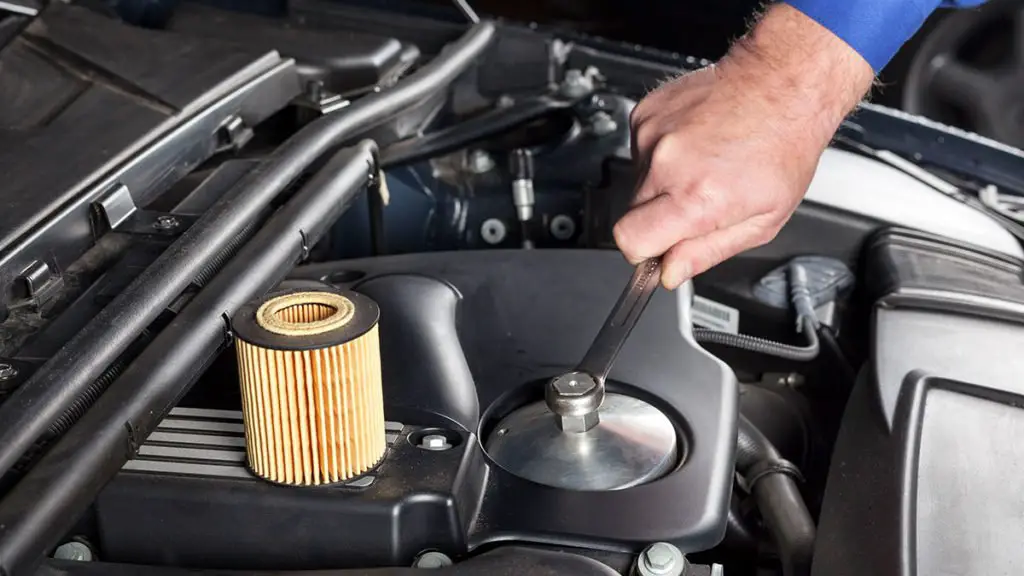
The oil filter is more important than the fuel filter. The oil filter cleans the oil that lubricates the engine, while the fuel filter only cleans the fuel before it enters the engine.
If the oil filter becomes clogged, it can cause engine damage, as the engine will not be properly lubricated. If the fuel filter becomes clogged, it can cause decreased performance and fuel economy, but it will not cause engine damage.
It is important to regularly replace both the oil filter and the fuel filter to keep the engine running smoothly.
Can you go without either one of them if necessary?
You can go without a fuel filter if necessary, but it is not recommended. The fuel filter protects the engine from contaminants in the fuel, and going without it could cause engine damage.
You should never go without an oil filter, as the engine will not be properly lubricated and could be damaged.
Should you clean the fuel filter when changing the oil filter?
Most carmakers recommend that the fuel filter be changed at the same time as the oil filter. The two filters have different jobs, but they are both critical to the engine’s performance. The oil filter keeps the engine clean by trapping dirt and other contaminants. The fuel filter cleans the fuel before it enters the engine, removing impurities that could damage the engine.
When changing the oil filter, it is important to also change the fuel filter to ensure that the engine is receiving clean fuel. Many new cars have disposable fuel filters that can be changed with each oil change. However, some older cars have reusable fuel filters that need to be cleaned and reinstalled. To clean a reusable filter, remove it from the car and soak it in a solution of degreaser and water. Rinse it thoroughly and dry it before reinstalling it. With a little care, you can keep your fuel filter clean and your engine running smoothly. See more detail about how to clean a fuel filter.
Can you remove the oil filter yourself?
Many people believe that changing their own oil is a simple task that can be easily completed at home. However, this is not always the case. While it is possible to change your own oil, it is important to understand the process and have the necessary tools before beginning. One of the most critical steps in changing your oil is removing the old filter. Depending on the type of vehicle you have, this can be a difficult and messy task. Additionally, if the oil filter is stuck and is not removed properly, it can result in oil leaks or other issues.
The bottom line
So, what are the key differences between oil filters vs fuel filters? The main difference is that oil filters remove solid contaminants from engine oil, while fuel filters remove them from gasoline or diesel.
Fuel filters also have a higher flow rate than oil filters, making them better suited for larger engines. Oil filters are typically smaller and have a lower flow rate.
It’s important to remember that both types of filters play an important role in keeping your engine running smoothly, so it’s important to make sure you use the correct type for your vehicle.

